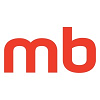3 Keys to Master Media Relations in Digital Age

In nightmares, CEOs and senior executives cringe about the companies they lead being devoured by the so-called Media Beast. These bad dreams are punctuated by banner headlines and viral stories exemplifying program or policy deficiencies, which are magnified by inaccurate and non-objective reporting.
In today’s fast evolving mobile, digital and virtual Information Age, the media has grown more massive and aggressive in a 24/7 hyper-paced news cycle.
Surveys and anecdotal evidence show that most professionals spanning all industries are not fond of dealing with the news media. However, if you’re a corporate spokesperson, subject matter expert or public relations pro, then it’s your job to feed the ravenous appetite of the Media Beast before it feasts on the organization you represent.
It’s your job as a PR pro to present the company in the most favorable light and safeguard the brand image.
Sensationalism & Infotainment
Welcome to the 21st century media world of infotainment substituting for the hard news of yesteryear. This problem is exacerbated by a handful of mega-global conglomerates which now own and oversee major media divisions, from traditional news to social media. Some of these corporate titans are changing the rules of the game with reckless abandon regarding traditional tenets of journalism.
Too often, media success is based strictly on corporate revenue and ROI -- to the detriment of good journalism.Some unscrupulous reporters may take aim at your organization, then shoot first and ask questions later to break news and beat the fierce competition -- including the omnipresence of social media.
This perilous predicament can leave your company in a state of disrepute and cause a crisis communications conundrum. That’s because, in large part, today’s technology allows a negative news story to go viral in a New York minute, regardless of whether the content is factually correct.
Truth and accuracy in reporting may take a back seat to grievous gossip and sordid sensationalism to attract a bigger audience and increase ad revenue.
But fear not...
Following are three time-tested tactics to master media relations and keep the ferocious Media Beast at bay:
- Humanize It
- Be Accessible
- Be Transparent
Forge Positive Relationships
First, always recognize that people are the key to successful communications. Moreover, it’s crucial to comprehend that journalists are people too, despite their historically low approval in public opinion polls.
Therefore, if your job is mastering media relations, ask yourself these two questions:
- How much do I know about those in media who cover my company?
- How do I ensure that media relations are non-adversarial and mutually beneficial?
The answers can largely reflect the ultimate PR success or failure for your company or client. Thus, a good start to media relations is by proactively forging positive relationships, as articulated last month in Part 1 of this post on March 6, 2016.
In that piece, I emphasized the critical importance of getting to know journalists on a basic human level. This goes a long way toward building mutual respect, goodwill and trust, all of which are essential elements of any good relationship.
Forget about the “us versus them” mentality. Rather, get out of the trenches and meet reporters face-to-face. Get to know them on a professional and personal level.
Personalizing media relations allows each party to view the other as an individual rather than an adversarial institution.
That’s why forging successful media relations begin with humanizing it.
Access Begets Accuracy
Second, the work of media relations is not a 9-to-5 job (as if that were ever the case). That’s why always being accessible to journalists pays off by ensuring accuracy in reporting, to the extent possible.
Today’s boisterous and cluttered digital media environment means that news is breaking around the clock. Hence, it’s your job as a company media rep to be responsive to reporters – and not just sometimes or when convenient, but all the time!
Journalists don’t want voicemail or an email bounce back when they contact you on deadline. Moreover, you don’t want your employer cited in a story as being inaccessible or unresponsive, which is embarrassing and hurts public perception of the organization.
Even though the official work day may technically be over at a time certain, members of the news media may still need your help. The reporter is depending on you, the company media liaison, to be there at all hours to help them get the story right in the first instance.
If editors or producers have last minute questions or concerns before putting a story to bed (as they say), they turn to the reporters for answers, who subsequently turn to the PR pros for a timely response.
The media outlet frankly doesn’t care that it’s late at night or a weekend. They don’t care if it’s family night in your household, whether the kids are sick, or your cesspool overflowed. They simply want updated information when they need it, which is on a tight deadline with no time to spare.

And, in today’s day and age, if the media is giving you the benefit of clarifying or correcting key information before a story goes out, any PR pro would be wise to seize such an opportunity whether it’s during down time or daybreak.
Don't miss an opportunity for positive press.
Therefore, if you want to foster successful media relations then it’s imperative to provide the media with a way to reach you at all times. For example, I recall one subject matter expert conducting interviews on a big breaking news story while on a family vacation at Disney World.
The bottom line for PR pros is for their organization to be portrayed fairly and accurately in the media at all times. To that end, accessibility builds trust and yields dividends.
To the contrary, being unreachable creates an aura of animosity and frustration for reporters. This can result in poor media coverage with a flood of factual errors -- for which the PR practitioner must take full blame and clean up the mess.

Trumpeting Transparency
Third, PR pros should always strive to be as transparent as possible. Don’t ever forget the vital role of a free press in an open democratic society. In that sense, your company should strategically be providing more information to the media than it withholds, as necessary and appropriate.
Being transparent and truthful is tantamount to successful media relations.
Although you aren’t employed by the media, you must work cooperatively with the media to achieve positive results. Reporters should have a sense at the micro-level that you, as the media contact, are working with them, not against them.
Being a PR pro is like a trapeze artist walking a flimsy tightrope without a net.
On one hand, you’re being pulled by your company’s executive leaders, who want to micromanage the message by endless and unmitigated nitpicking. Meanwhile, on the other hand, you’re being yanked by the media, which wants the information ASAP regardless of what hoops you must jump through.
But being transparent and truthful means going the extra mile for reporters, even if that arguably means rocking the boat internally to get the facts out. Don’t forget that withholding key information, or letting it out piecemeal, is never a good idea.
Recall the Nixon era lesson: The cover up is always worse than the crime.
Try following these rules:
- Don’t withhold information unless it’s absolutely necessary.
- Don’t make a reporter file a Freedom of Information Act (FOIA) request if you are able to provide the information or data without one.
- Don’t ever lie to the media because trust is difficult, if not impossible, to regain. Trust is the foundation upon which all successful relationships are built.
- If you’re wrong or don’t know something, admit it up front.
- If you cannot fulfill a media request on deadline, explain why.
- If you can’t speak on-the-record, then suggest other credible sources for information.
And, last but not least, if you must get negative information out, then do so quickly and all at once, if possible -- rather than creating an infamous drip-drip-drip scenario which leads to a bad story having legs. Again, being transparent means being honest, open and forthcoming with journalists. This builds respect and goodwill in the short term, as well as an unbreakable bond of trust over the long run.
Final Thoughts
In essence, if you want to master the art of media relations then remember this: your ultimate success or failure may hinge on personal relationships, access for journalists, transparency and trust.
Therefore, always act accordingly to benefit your own credibility and that of the organization you represent.
What do YOU think?
DBG
* An excerpted version of this 2-part post is also featured on Ragan's PR Daily (April 7, 2016) and the full post is also available Medium (April 10, 2016).NOTE: All views and opinions are those of the author only.
"
Articles from David B. Grinberg
View blog
You can always catch more buzz by blogging on beBee Affinity Social Network. The "Producer" publishi ...

Did you know that March is Women's History Month in the USA? This is a bit ironic because the march ...

How much do Americans care about affordable healthcare? Just ask President Donald J. Trump and the R ...
Related professionals
You may be interested in these jobs
-

Assembly-Contractor_KRN-YAS-6042
Found in: One Red Cent US C2 - 2 days ago
Software Galaxy Systems, LLC Londonderry, United States FreelanceDuration: 12 months · Shift: 1st shift will be a 9/80 schedule with every other Friday off. Start time at 6:00AM (No later than 6pm start) · OR 2nd shift will be a 9/80 schedule with every other Friday off. 3:00PM Start · Responsible for performing a wide variety of electronic or ...
-
Cardiovascular Technologist MS
Found in: Talent US A C2 - 1 day ago
Sarasota Memorial Health Sarasota, United StatesDepartment · Cardiology (Invasive) · Job Summary · Performs cardiovascular procedures in the Invasive Cardiology Department under the supervision of the Cardiologist and/or the Electrophysiologist at a level not requiring constant supervision of the technical detail. Performs a ...
-
Health and Safety Manager
Found in: Talent US A C2 - 6 days ago
InsideHigherEd Charlotte, United StatesPosition Number:008303 · Vacancy Open to:All Candidates · Working Title:Health and Safety Manager · Position Designation:EHRA Non-Faculty · Employment Type:Permanent - Part-time · Months per Year:12 · Work Schedule:8:00 am – 5:00 pm; Monday – Friday · Hours per week:40 · FLSA Sta ...


Comments
David B. Grinberg
6 years ago #10
CityVP Manjit
6 years ago #9
David B. Grinberg
6 years ago #8
David B. Grinberg
7 years ago #7
David B. Grinberg
7 years ago #6
Thanks so much, Lisa, your kind words and gracious support mean a lot me. I really appreciate YOU and all you do.
David B. Grinberg
7 years ago #5
Thank YOU, as always, Donna-Luisa Eversley for your kind words and positive social media engagement. I really like your new blog posts as well!
David B. Grinberg
7 years ago #4
Mark Blevins
8 years ago #3
Phil Friedman
8 years ago #2
Qamar Ali Khan
8 years ago #1